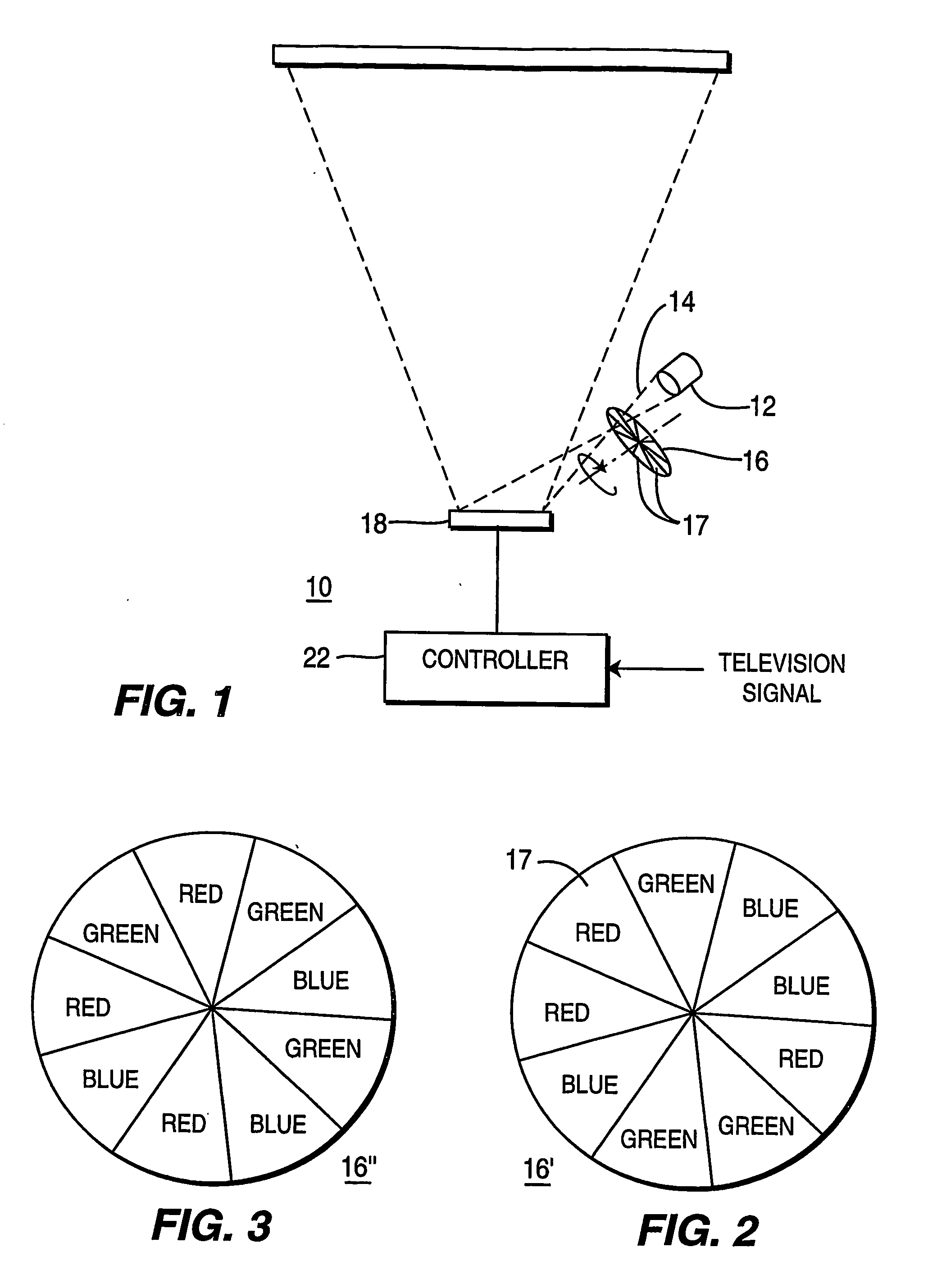Sequential display system with changing color order
- Summary
- Abstract
- Description
- Claims
- Application Information
AI Technical Summary
Benefits of technology
Problems solved by technology
Method used
Image
Examples
Embodiment Construction
[0011]FIG. 1 depicts an exemplary sequential color display system 10 comprising a light source 12 for generating a light beam 14 directed through a rotating color wheel 16 having at least three separate primary color windows 17, e.g., at least one red (R), one green (G) and one blue (B) window. A typical color wheel of according to the prior art has two red, two blue and two green windows interleaved in an RGBRGB sequence. During rotation of the color wheel 16, red, green and blue light successively strike the surface of a light modulator 18 for reflection thereby onto a display screen 20.
[0012] A controller 22 controls the operation of the light modulator 18 in accordance with an input television signal containing a sequence of pictures, each picture appearing within a picture interval established in accordance with a prescribed television standard (i.e., 1 / 60 second for NTSC and 1 / 50 second for PAL). For each picture, the controller 22 produces control signals causing the light m...
PUM
 Login to View More
Login to View More Abstract
Description
Claims
Application Information
 Login to View More
Login to View More - R&D
- Intellectual Property
- Life Sciences
- Materials
- Tech Scout
- Unparalleled Data Quality
- Higher Quality Content
- 60% Fewer Hallucinations
Browse by: Latest US Patents, China's latest patents, Technical Efficacy Thesaurus, Application Domain, Technology Topic, Popular Technical Reports.
© 2025 PatSnap. All rights reserved.Legal|Privacy policy|Modern Slavery Act Transparency Statement|Sitemap|About US| Contact US: help@patsnap.com


